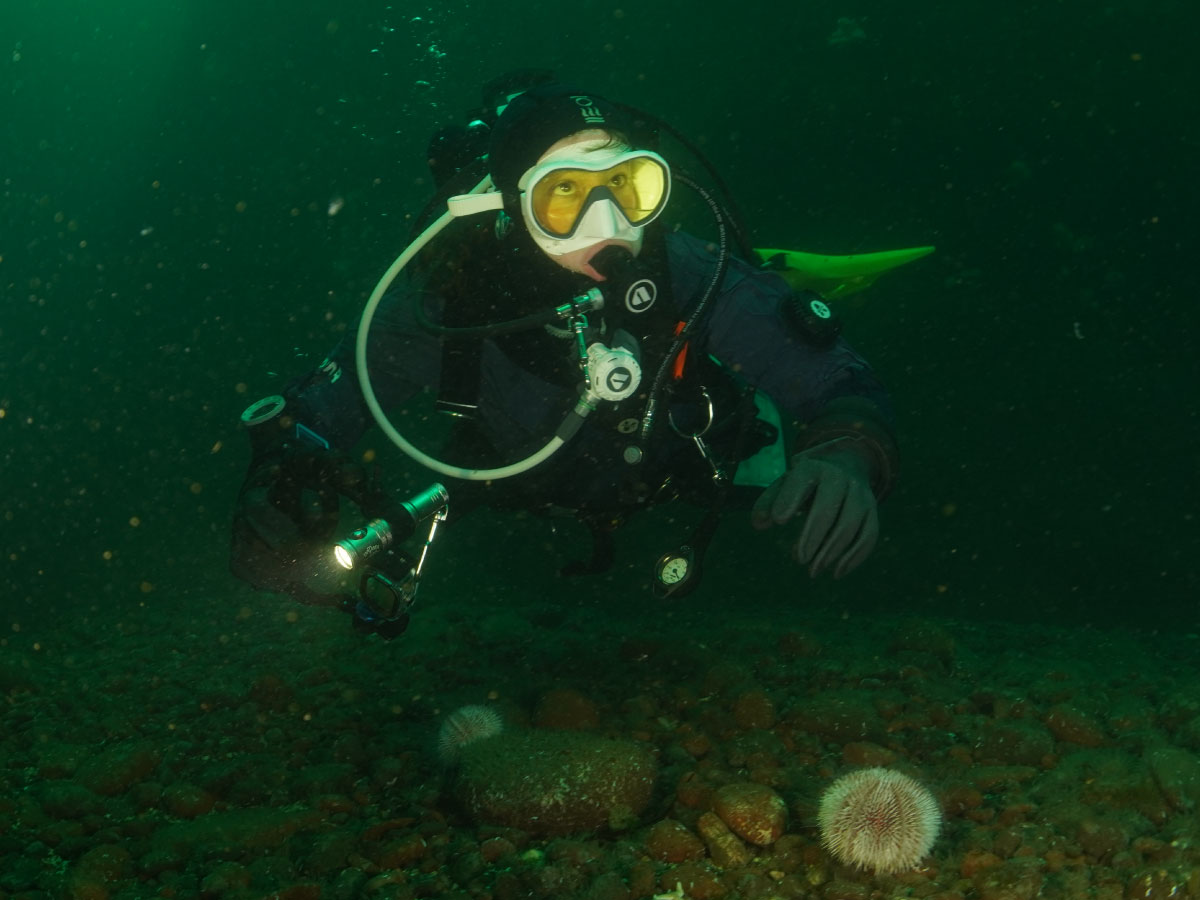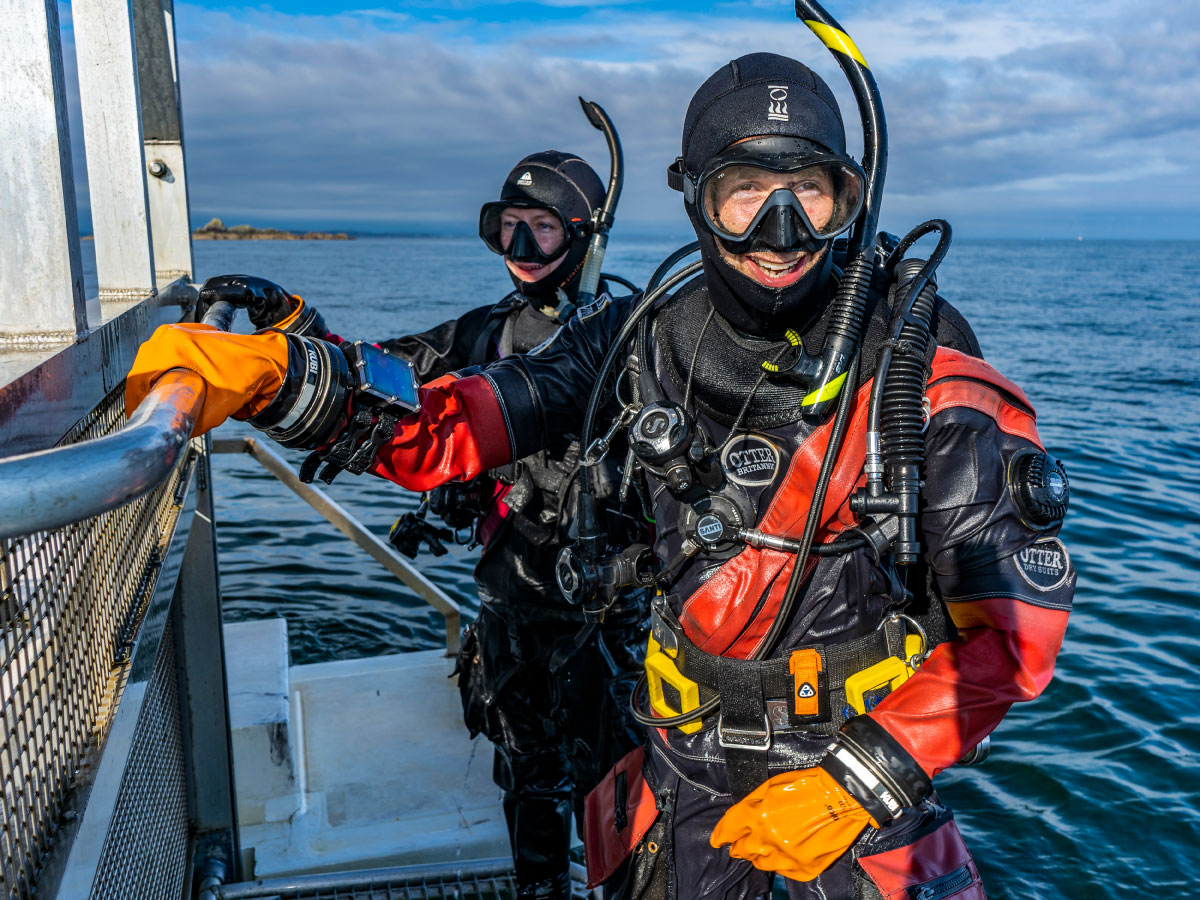CHANGES TO PADI DRY SUIT STANDARDS
This week, there's been some massive changes to PADI Dry Suit standards. If you teach the PADI Drysuit Specialty Course, Drysuit Adventure Dives, or any of your students use drysuit during your training, you need to have a read of this so you make sure you're up to date.
PADI standards regularly change to reflect what's going on in the diving industry. In this case, I think these changes are because of an awful accident that happened in the USA in 2020. All the legal stuff has just been settled, and now we have some tweaked standards to adhere to. These changes take a step further towards keeping divers safe and helping to reduce the likelihood of history repeating itself.
It's also worth remembering that just because standards are there in black and white, it doesn't necessarily mean that diving in a drysuit is now magically "safe". It's your job as a dive pro to incorporate these standards into your teaching alongside everything else you do that makes your training so bloody amazing.
Here's a rundown of the changes to PADI Dry Suit standards that come into effect on the 1st June 2023 (although immediate implementation is recommended).
INSTRUCTOR QUALIFICATION REQUIREMENTS
You must be a PADI Dry Suit Specialty Instructor if your student divers/participants have never used dry suits and will use dry suits during open water dives.
You've always needed to be a PADI Dry Suit Spec Instructor to deliver the dry suit specialty course. But anyone could conduct a drysuit adventure dive or an orientation. The changes have really clarified who can do what when it comes to drysuits.
Only Dry Suit Specialty Instructors will be able to work with divers who are brand new to drysuit diving. Only they can deliver the drysuit adventure dive, conduct dry suit orientations or teach the Open Water Course using drysuits (possibly other courses too, depending on if the students meet their requirements below).
CERTIFIED ASSISTANT QUALIFICATION REQUIREMENTS
Certified assistants for the Cavern, Dry Suit, Enriched Air, Full Face Mask, Ice and Rebreather (unless diving in standard open circuit equipment) Adventure Dives must hold the corresponding diver-level specialty certification for the dive.
So, if you're acting as a certified assistant on a Drysuit Adventure Dive, you must have completed the PADI Dry Suit Specialty Course (the diver level) yourself.
This also applies to being a certified assistant on the PADI Dry Suit Specialty Course with this standard from the Instructor Guide:
Certified assistants must have a PADI Dry Suit Diver certification (or qualifying certification).
Drysuits are now considered as specialised equipment that need training to use effectively. This standard brings drysuits into line with other specialised activities like full face masks, nitrox, rebreathers etc. It makes sense that the people in charge should have some formal training themselves if they're going to be involved in teaching it to someone else.
While we're talking about certified assistants, there's also been some changes to who's allowed to supervise dives on the drysuit spec course. Previously, certified assistants were able to operate under indirect supervision. Now, the spec instructor has to directly supervise:
A Teaching status PADI Dry Suit Diver Specialty Instructor must be present and in control of all activities. During the Dry Suit Diver open water dives, student divers must be directly supervised by the course instructor. The Specialty Instructor must ensure that all performance requirements are met.
STUDENT/PARTICIPANT REQUIREMENTS FOR DRYSUIT DIVING
This is a massive change to PADI Dry Suit standards.
To use a dry suit during any PADI course or program, your student diver/participant must meet one of the following:
- Be enrolled in a PADI Dry Suit Diver specialty course
- Have a PADI Dry Suit Diver certification (or qualifying certification from another training organization)
- Provide proof of at least four dives in a dry suit in conditions comparable to those to be used in training.
- With a PADI Dry Suit Specialty Instructor, complete the Dry Suit Orientation and Dry Suit Adventure Dive prior to the course/program. (See the Dry Suit Adventure Dive requirements in the Advanced Open Water Diver Course Instructor Guide.) When fulfilling this option, during all course/program dives:
- Divers must be under the direct supervision of a PADI Dry Suit Specialty Instructor or a certified assistant. The maximum diver-to-certified assistant ratio is 2:1.
- Maximum dive depth is 30 metres/100 feet.
- On dives deeper than 18 metres/60 feet, divers must be directly supervised by a PADI Dry Suit Specialty Instructor at a maximum ratio of 4:1.
- Note: Divers may need to repeat this option for subsequent courses/programs until they meet one of the other options.
Applying these options to my own teaching:
- I'm glad I can still link the Open Water Course with Dry Suit training (very popular here in the UK). The first option will satisfy the criteria as they'll be enrolled on the drysuit spec course too.
- I'm skeptical of the diver providing proof of prior drysuit dives... just because they've used one four times, doesn't necessarily mean that they have the level of skill I'm looking for. I don't think I'd use this unless they had LOADS of drysuit dives under their belt. If there's only a handful, I'd be inclined to go down the orientation route...
- But the orientation route now seems pretty redundant if I have to complete an Adventure Dive too. It would make more sense for me to include an extra dive during the time they're spending with me and complete the full spec. This will be a better experience for the diver (plus they'll gain another qualification) and better for business too!
- I got a fright reading these the first time as I thought... OH NO... what about when we put DSDs in drysuits when the training tank is freezing?? But fear not - if you're conducting DSDs in cold water, there's an exception. Divers don't need to meet one of those requirements during Pool or confined water experiences when trying or learning how to use a dry suit while directly supervised by a PADI Dry Suit Specialty Instructor.

ASSESSING DIVER READINESS
In preparation for the dive and before beginning open water dive skills, assess the diver’s skills and comfort level inwater and generally assess dive knowledge. This assessment should include the use of specialized equipment (such as dry suits, full face masks, etc.) that the diver is already qualified to use and will use during the program. If the diver exhibits lack of dive readiness, remediate before training progresses.
Now that drysuits have achieved the status of "specialised equipment", they need to be included in your assessment of diver readiness. When a new diver comes to you for a course (and in my opinion a fun dive too) you need to know where they're at in terms of their general comfort and skill level. If they're going to be using a drysuit, make sure they're wearing it during the assessment and run some skills too. It helps you fix any obvious issues before you take them into open water and gives you a general idea of how they're going to be underwater.
I call them check dives - a bit friendlier than an assessment. For students enrolling on courses, this will be part of their first confined session with me (and I'll add extra confined sessions to cover this). For fun divers, I insist on a check dive in our training tank before anyone hits the sea.
What you do with the diver in these sessions is still up to you to decide - there's no set PADI menu we can deliver to help us assess them. There's no performance requirements. I usually do some buoyancy games and then do some basics like mask, reg, air sharing, emergency skills. You could even run it like a ReActivate and ask them if there's anything they'd like to work on.
When I'm checking they know the craic with a drysuit, I run through the skills from the drysuit spec or the drysuit orientation with a focus on their buoyancy and ability to dump gas.
RATIOS
When it comes to ratios for any PADI program, I always get my head in the Instructor Manual or Spec Guide before I teach each course. There's no way I can remember all the little nuances and numbers, so it's best I double-check.
Here's a summary of ratio changes to PADI Dry Suit standards for the Adventure Dive:
- Directly supervise divers at a maximum ratio of 6:1. Two additional students may be added with a certified assistant to a maximum of eight students.
- The instructor must directly supervise student divers on dives deeper than 18 metres/60 feet at a maximum ratio of 4:1.
New ratios for dry suit use in PADI Programs when you're taking the orientation and adventure dive route:
- Divers must be under the direct supervision of a PADI Dry Suit Specialty Instructor or a certified assistant. The maximum diver-to-certified assistant ratio is 2:1.
- On dives deeper than 18 metres/60 feet, divers must be directly supervised by a PADI Dry Suit Specialty Instructor at a maximum ratio of 4:1.
And in the PADI Drysuit Specialty Course:
- The ratio for open water dives is 6 student divers per instructor (6:1), with 2 additional student divers allowed with one certified assistant to a maximum of eight students.
- The course instructor must directly supervise divers on dives deeper than 18 metres/60 feet at a maximum ratio of 4:1.
Remember, don't rely on trying to remember these - check them again when you're organising your next lot of training.
ASCENT RATES
Dives in a dry suit have a maximum ascent rate of 9 metres/30 feet per minute.
This change totally makes sense - I'd struggle to dump the air out of my drysuit if I'm going any faster than this, so it's a good idea to teach our students to slow their ascents right down. Lots of dive coms have their ascent rates set at this too which will make monitoring their ascent even easier.
You'll see these changes sprinkled where necessary throughout the Instructor Manual and Dry Suit Spec IG.
EQUIPMENT SPECIFICS
Dry suits must have a dedicated low-pressure inflator hose from the regulator, or an inflation system specifically for the dry suit.
Of all the recent changes to PADI Dry Suit standards, this is the one that made me think of the Linnea Mills Case. This standard helps highlight an important step we need to take when checking equipment is suitable for use - especially if the diver has brought their own gear.

KEY TAKEAWAYS
Congrats for getting up to speed with theses changes to PADI Dry Suit standards. Go forth, implement and have fun!
Make sure you download the latest version of the PADI Instructor Manual and the Dry Suit Instructor Guide from your PADI Dashboard. All the changes I've mentioned in this blog have been updated already, no need to get the pens out and start annotating (if you still do this, seriously, you need to go digital it'll save soooo much time!)
If you've suddenly found yourself needing a PADI Dry Suit Specialty Instructor Rating, give me a shout. I'd love to work with you on that.
And one final note - standards are just one piece of the puzzle when it comes to diver safety and risk management. There's been some excellent discussion regarding the changes to PADI Dry Suit standards on the Human Factors in Diving Facebook group. If you haven't already fallen down this rabbit hole of learning, go and have a look. Be warned though, you'll start to look at how you teach diving in a very different light!